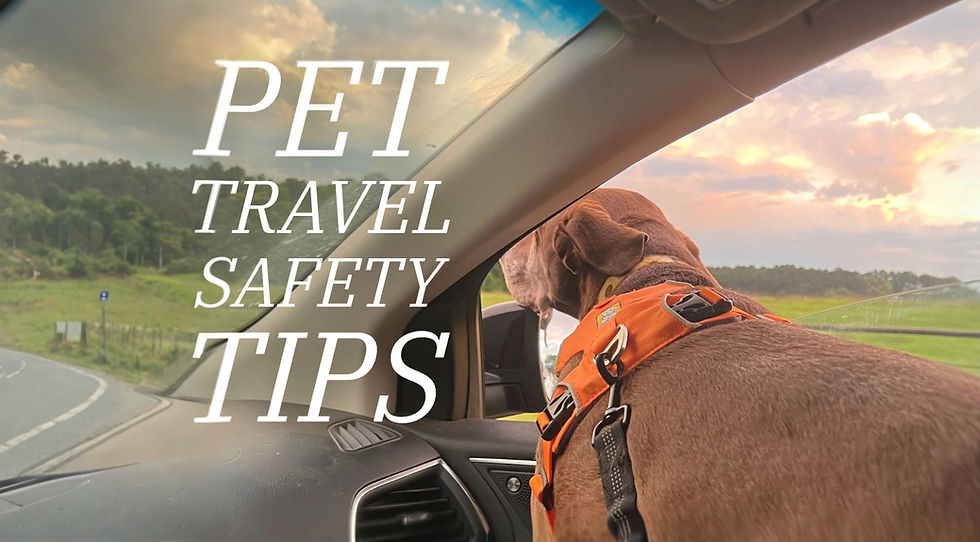An Emergency Plan for You and Your Pet
- Jul 17, 2023
- 3 min read
Hopefully, you will never have to utilize this information, but it is better to prepare for an emergency and never need those preparations, than to not prepare and be in a huge bind.

First, it is a good idea to have a small kit or box for a few over the counter medications you may need if an emergency arrives and you cannot physically get your pet to the veterinarian during the situation. I will list a few items here, but talk to your veterinarian about specifics and doses.
Anti-nausea medicine
Anti-diarrhea medicine
Anti-histamine
Gauze padding
Medical tape
Medical wrapping or bandage
Antibiotic ointment
Nail clippers
Dog/Cat crate/carrier appropriate for your pet(s)
Small bag/cans of food - enough for 7 days.
Extra leash/harness and food/water bowls
Make sure you know/have a phone number of an organization that you can call immediately if you cannot evacuate your pet with you.
A good habit to start is to make this box and replace expired items, etc. every 12 months.
Now that you have an emergency kit that you can grab if needed, I would recommend placing a microchip in your pet AND REGISTERING the microchip with the company. A microchip is the only non-removable form of identification you have if your pet gets lost is a natural disaster. Veterinary offices, shelters, and rescue organizations will scan for microchips on intake of a pet and can easily notify you if your pet if microchipped and registered.
Here are a few specific situations we will hopefully never encounter:
Hurricane/Flooding and Evacuation
Evacuate your pet with you - in a crate or carrier (especially cats) so they are safely contained
If you are inside your home and flooding occurs and you cannot drive out, try to take your pet with you on the evacuation boat, etc.
If not allowed, call the number you have saved in your “Emergency” kit (better yet, keep this number in your phone.)
Fire
In cases of a fire in the home, if it is safe, place your cats in the carrier and remove them from the home.
If it is not safe to take the time to place your cat in a carrier, take them outside with you immediately.
With dogs, I would take them out of the home with you immediately.
If you have to leave a pet as it is unsafe to find and take with you, notify the fire department immediately that there is a pet in the home. If your pet is rescued from a burning home, a fireman will likely administer oxygen immediately. Then, take your dog or cat to a veterinarian immediately for continued care.
Always remember that you must remove yourself from the home as if you are not safe you will not be able to get your pet the help they need. Your life and the life of your loved ones in the home are always more important.
If you find yourself if one of these situations and you have safely evacuated yourself, family, and your pet, you may have to place your pets in boarding facilities or with your veterinarian, friends, and/or family until you have a place where they can safely be with you.
aspca.org also has a free window sticker to alert rescue authorities that you do have a pet inside that needs evacuated, in case the emergency occurs when you are not home.
www.avma.org also has several videos about evacuation planning and practicing with your pet, as well as other resources to help in your preparedness.
The best plan is a prepared plan.




Comments